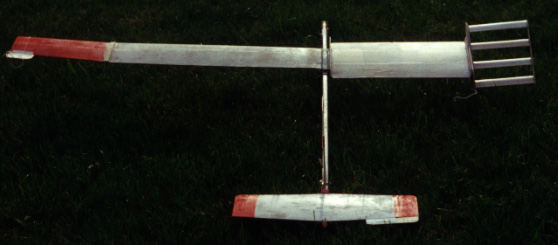 |
|||||
| Home | Research | For Teachers | HISTORY Level 1 Level 2 Level 3 |
PRINCIPLES Level 1 Level 2 Level 3 |
CAREER Level 1 Level 2 Level 3 |
| Gallery | Hot Links | What's New! | |||
| Web Administration and Tools | |||||
 |
|||||
| Home | Research | For Teachers | HISTORY Level 1 Level 2 Level 3 |
PRINCIPLES Level 1 Level 2 Level 3 |
CAREER Level 1 Level 2 Level 3 |
| Gallery | Hot Links | What's New! | |||
| Web Administration and Tools | |||||

A wing with a properly designed winggrid shows the following properties:
1. Very low induced drag (Compared to conventional wings, induced drag is up to 60% smaller). This effect can also be described with a span efficiency, i.e., the resulting span of a configuration with winggrid compared to a conventional wing with the same glide number. With the winggrid, a span efficiency up to 3.0 is possible.
This main effect was already demonstrated with an asymmetric test configuration at model scale, cf. pictures below.

The following schematics of wings with identical glide number and specific load show
the magnitude of the effect:
a) conventional wing with half span aspect ratio of 7.
b) wing with winggrid, same area but 64% span.
c) wing with 100% span and 245% lift
2. Increased resistance to tip stall. The test plane showed very high resistance to tip stall even in wet conditions (rain). This feature increases flight safety.
3. The winggrid generates a rectangular lift distribution that leads to an increased overall lift of 127% and reduces the ground effect during take off and landing.
4. The winggrid leads to an increased efficiency of the flaps due to the rectangular lift distribution and resistance to tip stall.
See FAQ's to the manned experimental proof of concept, which clarifies a lot.
However, a wingrid improves well designed aircraft only.
See "How to evaluate an airplane’s performance and the Winggrid".
How does it do it?
Who do I contact?
Send all comments to ![]() aeromaster@eng.fiu.edu
aeromaster@eng.fiu.edu
© 1995-98 ALLSTAR Network. All rights reserved worldwide.
Updated: 23 February, 1999